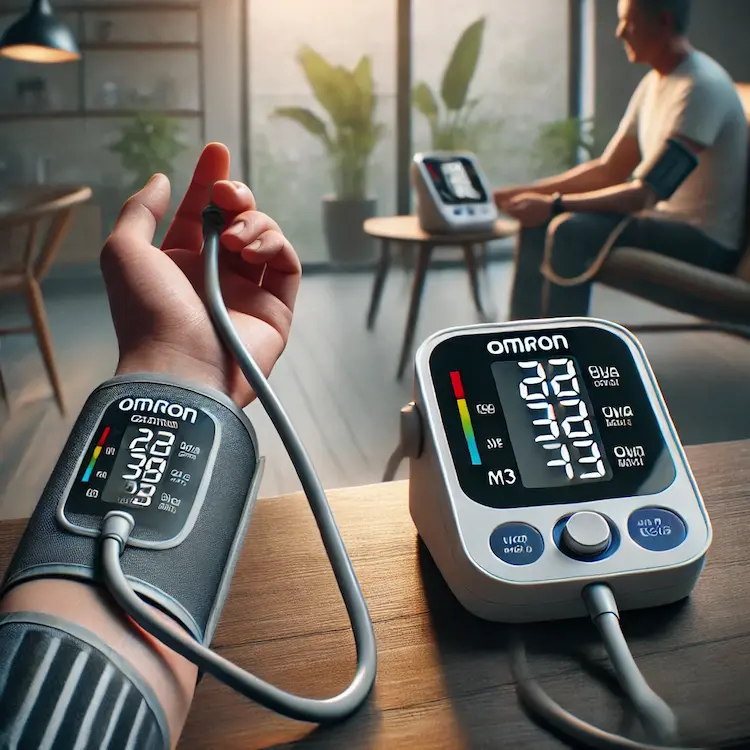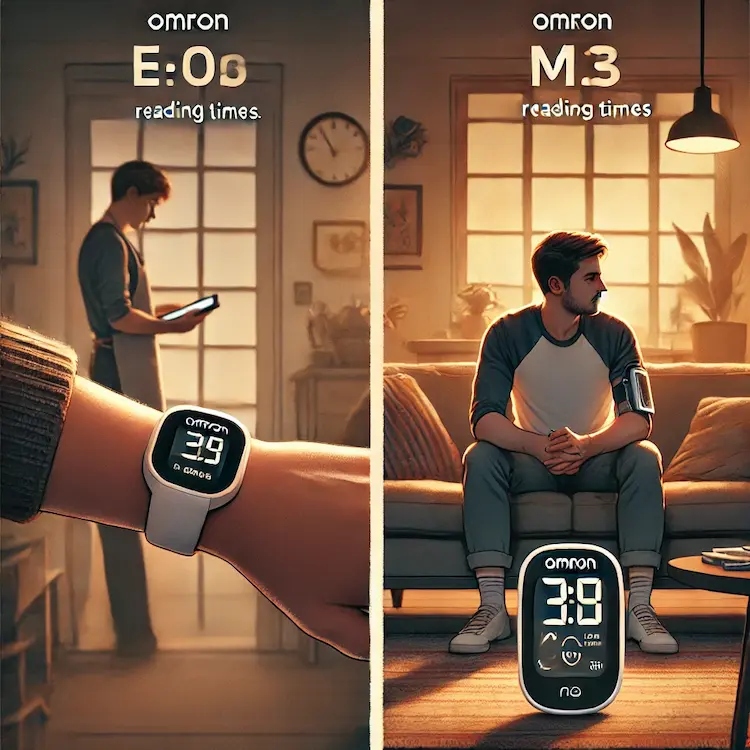Blood pressure monitoring is essential for individuals managing hypertension or tracking their cardiovascular health. Among the most trusted brands, Omron has developed a range of digital blood pressure monitors, with the Omron Evolv and Omron M3 being two popular models. A crucial factor for users is the reading time—how quickly these devices deliver results.
This article provides a detailed comparison of the Omron Evolv and Omron M3 in terms of speed, accuracy, usability, and overall efficiency. We’ll also discuss why reading time matters, real-world performance data, and actionable tips to help users make the right choice.
Why Reading Time Matters in Blood Pressure Monitors
Impact on User Experience
- A shorter reading time ensures convenience, especially for people who need frequent monitoring.
- Reduces discomfort caused by prolonged cuff inflation.
Clinical and Home Use Implications
- In medical settings, faster readings improve efficiency, especially in high-volume patient monitoring.
- For home users, a quick reading prevents frustration and increases the likelihood of consistent monitoring.
Emergency Situations
- In hypertensive crises or emergency medical conditions, rapid readings can be life-saving.

Omron Evolv vs. Omron M3: Core Differences
Before analyzing their reading speeds, let’s compare the general specifications of both devices.
| Feature | Omron Evolv | Omron M3 |
|---|---|---|
| Cuff Type | All-in-One (Tubeless) | Standard Upper Arm Cuff |
| Display | LED Digital | LCD Digital |
| Memory | Stores up to 100 readings | Stores up to 60 readings per user (2 users) |
| Connectivity | Bluetooth (Omron Connect App) | No Bluetooth |
| Power Source | 4 x AAA batteries | 4 x AA batteries |
| Reading Time | ~20-25 seconds | ~30-35 seconds |
| Accuracy | IntelliSense Technology | IntelliSense Technology |
| Portability | Compact and Wireless | Requires a separate monitor unit |
| Price Range | Higher | More Affordable |
Which Device Has a Quicker Reading Time?
The speed of a blood pressure monitor depends on factors such as cuff inflation time, sensor responsiveness, and processing capability.
Omron Evolv: Faster and More Advanced
- Reading Time: Approximately 20-25 seconds from inflation to result.
- Technology Advantage: Uses IntelliWrap™ Cuff with 360° Accuracy, ensuring readings in one go without the need for repositioning.
- Tubeless Design: Eliminates the time taken for tube adjustments or connection to a separate unit.
- Smart Sensor Processing: The Omron Connect App enables real-time data sync, reducing manual logging time.
Omron M3: Reliable but Slightly Slower
- Reading Time: Approximately 30-35 seconds due to a traditional cuff and separate processing unit.
- Cuff Design: Uses a standard soft cuff, which requires proper positioning for an accurate reading.
- Manual Data Logging: Since it lacks Bluetooth connectivity, users may need extra time to record readings manually.
Performance Comparison Chart
A graphical representation of the average reading time comparison: I’ll generate a bar chart showing the comparison between Omron Evolv and Omron M3 in terms of reading time. As shown in the chart, Omron Evolv delivers results faster than the Omron M3, making it a preferred choice for users who prioritize speed.
Factors Influencing Reading Time
Cuff Inflation Mechanism
- Omron Evolv’s IntelliWrap Cuff ensures quicker, more efficient inflation.
- Omron M3’s standard cuff may take longer due to adjustments required for accuracy.
Sensor Responsiveness
- Evolv has advanced pressure sensors that quickly stabilize and measure blood pressure.
- M3 uses a traditional oscillometric method, slightly slower in processing.
Connectivity & Data Processing
- Evolv syncs data via Bluetooth, reducing additional time spent on manual recording.
- M3 lacks smart connectivity, making post-reading data management slower.

Practical Advice: Choosing the Right Device for Your Needs
| User Needs | Best Choice |
|---|---|
| Fast Readings Needed | Omron Evolv |
| Budget-Friendly Option | Omron M3 |
| Bluetooth & Mobile App Sync | Omron Evolv |
| Traditional Non-Smart Device | Omron M3 |
| Portability & Compact Design | Omron Evolv |
| Larger Display for Easy Reading | Omron M3 |
Who Should Choose Omron Evolv?
- Tech-savvy individuals who want Bluetooth features and app tracking.
- Frequent users who need quicker readings.
- Travelers who prefer a compact and tubeless monitor.
Who Should Choose Omron M3?
- Budget-conscious buyers looking for a reliable and accurate BP monitor.
- Elderly users who may prefer a larger screen with simple functionality.
- Households that require multiple users sharing a single device.
Conclusion
The Omron Evolv is the faster device, providing readings in approximately 20-25 seconds, while the Omron M3 takes around 30-35 seconds. The difference may seem small, but for frequent users or medical professionals, those extra seconds can be significant.
If speed and connectivity are top priorities, the Omron Evolv is the better choice. However, if affordability and basic functionality are more important, the Omron M3 remains a solid option.
Key Takeaways
- Omron Evolv is quicker (~22.5 sec avg.), while Omron M3 takes longer (~32.5 sec avg.).
- Tubeless design and smart technology contribute to Evolv’s faster readings.
- Omron M3 is budget-friendly but lacks Bluetooth and requires manual data tracking.
- Choose based on priorities: If you need speed, go for Evolv; for affordability, go for M3.
Actionable Recommendations
- Frequent users should prioritize Omron Evolv for faster readings and smart tracking.
- Ensure proper cuff positioning for both models to optimize accuracy.
- Consider long-term usability: Evolv is future-proofed with connectivity, while M3 is a reliable traditional choice.
- If sharing among family members, the M3’s dual-user feature is an advantage.


